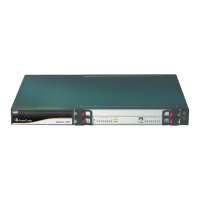Version 7.0 491 Mediant 3000
User's Manual 24. Manipulation
ISDN Release
Reason
Description
SIP
Response
Description
83
Suspended call exists, but this call
identity does not
503* Service unavailable
84 Call identity in use 503* Service unavailable
85 No call suspended 503* Service unavailable
86
Call having the requested call identity
has been cleared
408* Request timeout
87 User not member of CUG 503 Service unavailable
88 Incompatible destination 503 Service unavailable
91 Invalid transit network selection 502* Bad gateway
95 Invalid message 503 Service unavailable
96
Mandatory information element is
missing
409* Conflict
97
Message type non-existent or not
implemented
480* Temporarily not available
98
Message not compatible with call state
or message type non-existent or not
implemented
409* Conflict
99
Information element non-existent or not
implemented
480* Not found
100 Invalid information elements contents 501* Not implemented
101 Message not compatible with call state 503* Service unavailable
102 Recovery of timer expiry 408 Request timeout
111 Protocol error 500 Server internal error
127 Interworking unspecified 500 Server internal error
* Messages and responses were created because the ‘ISUP to SIP Mapping’ draft doesn’t
specify their cause code mapping.
24.8.3 Configuring ISDN-to-ISDN Release Cause Mapping
The Release Cause ISDN to ISDN table lets you configure up to 10 ISDN ITU-T Q.850
release cause code (call failure) to ISDN ITU-T Q.850 release cause code mapping rules.
In other words, it lets you change the originally received ISDN cause code to a different
ISDN cause code. For example, the PSTN may indicate disconnected calls (hang up) by
sending cause code 127. However, you can change the cause code to 16, which is a more
typical cause code for such call scenarios. When the device receives an ISDN cause code
from the PSTN side, it searches the table for a matching ISDN cause code. If found, the
device changes the cause code to the corresponding ISDN cause code. If the ISDN cause
code is not configured in the table, the originally received ISDN cause code is used. If the
new ISDN cause code also appears in the Release Cause Mapping ISDN to SIP table (see
''Configuring ISDN-to-SIP Release Cause Mapping'' on page 488), the device maps it to
the corresponding SIP response code, which it sends to the IP side.

